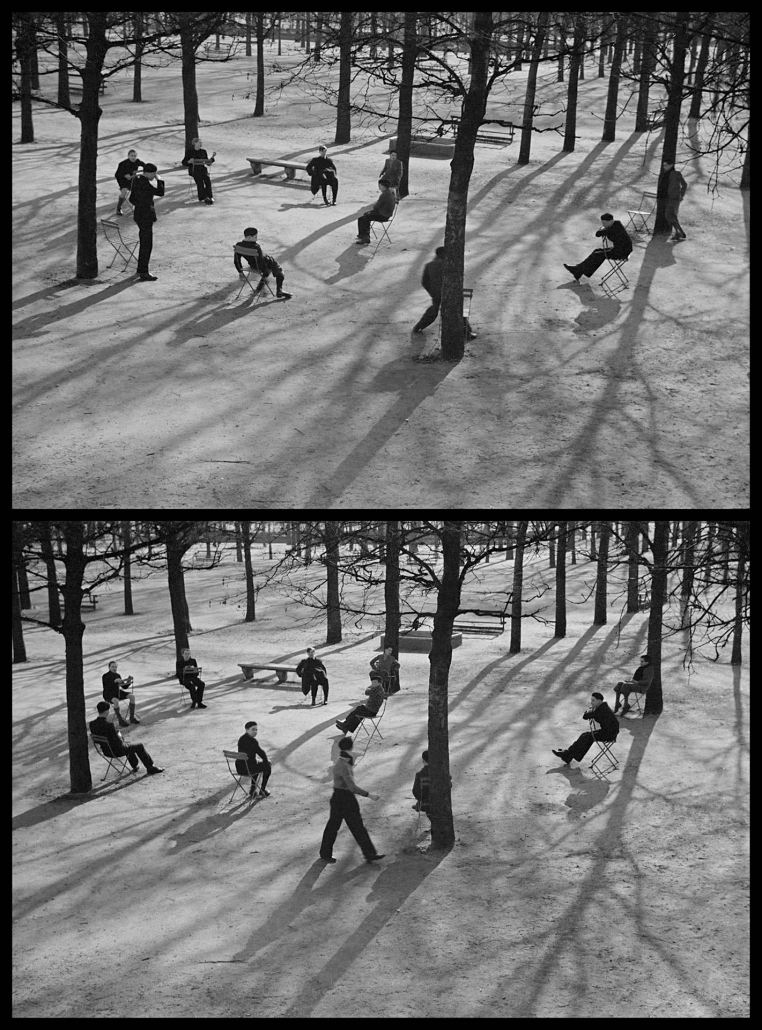This post is also available in:
 French
French
The vision of André Kertész (1894-1985) is one of those that opened new paths in the photography of the 20th century. Amateur of photography at the age of 18, master of the aesthetic research of the New Vision at the age of 28, pioneer of the media issues of the emerging photographic documentary at the age of 36, he has largely contributed to the aesthetic and professional evolutions of the medium. But even if several generations of photographers recognize their debt towards his approach and his images, it is for another reason: he is the one who, without any special effects or pomp, only through constant attention and aesthetic subtlety, revealed the possibility of pursuing a serene work throughout a photographer’s life, apart from trends and in the margin of orders.
This work, bequeathed to the state by André Kertész in 1984, has since then been the subject of many studies, but his 24×36 practice remains indistinct and unknown. However, as said John Szarkowski (curator at the MoMA in New York from 1962 to 1991), ”perhaps more than any other photographer, André Kertész understood the particular aesthetics of the handheld camera and made it evident.”
Kertész had possessed a Leica since 1930. With this camera, the photographer’s look no longer focuses on the ground glass but becomes projected into a frame juxtaposed to his field of vision. The new kind of viewfinder allows the eye looking for its spots in the image while the body is looking for its position in space. By taking this camera in the streets of Paris, the suburban slums and countryside roads, in a few seasons Kertész had invented a process which paved the way for many photographer’s vocations: the photo walk. ”I took a few steps with it, and I got the picture,” as he simply resumed in front of one of his photographs.
A recent and previously unpublished study of the original negatives preserved by the Médiathèque de l’Architecture et du Patrimoine made possible to reconstitute, for the first time, the chronological continuity of the images taken by the photographer with his Leica in 1930 and 1936. The outcome of this research, the exhibition presented at the Maison Doisneau from November 22, 2019 to February 9, 2020, accompanied by a reference book published by the André Frère editions, suggests to return to this moment of shooting and to observe these few steps of Kertész nearby those he photographs.
From one shutter release to another, we discover his favorite places and subjects, his distances and angles of approach, the patterns and connections inspiring him, his moments of lookout or perseverance, his thoughtfulness and his restraint towards what the people or the circumstances he photographed offered to him, and, finally, his capacity to consider attention to be the horizon of his shot.
Visitors and readers are thus welcomed to better understand how the eye thinks when the shutter is released.
From 21/11/2019 to 09/02/2020
MAISON DE LA PHOTOGRAPHIE ROBERT-DOISNEAU
1 rue de la Division du Général Leclerc
94250 GENTILLY
France
Opening hours : Wednesday to Friday from 1:30 pm to 6:30 pm, Saturday and Sunday from 1:30 pm to 7 pm
Phone : 01 55 01 04 85
robert.pareja@grandorlyseinebievre.fr
www.maisondoisneau.agglo-valdebievre.fr



